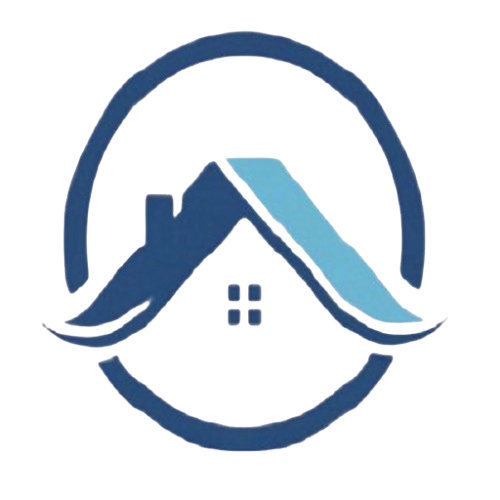In property management, hidden costs can silently erode profits if not addressed proactively. From unexpected maintenance to inefficient project planning, these expenses can quickly add up and disrupt even the most carefully prepared financial forecasts. Platforms like tailorbird.com are emerging as powerful tools to help property operators detect, reduce, and even prevent such hidden costs. By leveraging automation and AI-driven insights, Tailorbird empowers real estate teams to streamline their operations, gain real-time visibility, and make more informed financial decisions that protect the bottom line.
The Challenge of Hidden Costs in Property Operations
Many property operators are familiar with the frustration of incurring unplanned expenses. These costs can range from small, recurring inefficiencies to large, one-time hits that completely derail a project budget. Common culprits include outdated asset data, poorly negotiated vendor contracts, scope creep in renovation projects, and delays caused by unclear communication between stakeholders.
What makes these expenses so dangerous is that they often remain invisible until it’s too late. By the time they appear on the balance sheet, they’ve already caused a significant financial impact. That’s why early detection and preventive strategies are crucial—not just to avoid overspending, but to protect profitability in a competitive market.
In an industry where operational margins are often razor-thin, allowing hidden costs to accumulate can mean the difference between hitting financial targets and operating at a loss.
How Tailorbird Targets Hidden Expenses?
Tailorbird is designed to tackle this challenge head-on by providing a unified platform for property lifecycle planning, covering acquisitions, construction management, and asset operations. The goal is to ensure that every phase of a property’s journey is as cost-efficient and predictable as possible.
Through advanced data integration and real-time analytics, Tailorbird gives operators a clear and accurate view of cost drivers, scope accuracy, and budget alignment. For example, during the renovation planning stage, its AI-powered system can flag specific scope items that have historically led to overages. This allows teams to adjust plans before a single tool is picked up, avoiding expensive surprises later in the process.
Another key feature is Tailorbird’s automated cost estimating tool. Manual budget calculations are not only slow but also prone to human error—one miscalculation can result in thousands of dollars in unexpected expenses. Tailorbird generates precise, data-backed budgets in a fraction of the time, giving operators both speed and accuracy. For organizations managing multiple properties, these tools also ensure pricing consistency and standardized planning across the portfolio.
Improving Vendor and Contractor Management
Vendors and contractors can be a major source of hidden costs if not properly managed. Without oversight, it’s easy for contractors to bill for unnecessary work, introduce unplanned change orders, or apply above-market rates during the project. Tailorbird’s centralized platform addresses this by enabling property teams to compare vendor bids side by side, track contractor performance over time, and confirm that completed work matches the agreed-upon scope.
By maintaining a digital record of vendor performance, pricing trends, and project outcomes, Tailorbird equips property operators with the data needed to negotiate more favorable terms in future contracts. This transparency reduces financial waste, ensures accountability, and strengthens relationships with reliable service providers.
In real terms, this means fewer disputes, less time lost on rework, and more predictable project timelines.
Boosting Efficiency Through Automation
Manual processes are fertile ground for inefficiency. Relying on spreadsheets for budgeting, juggling multiple email chains for communication, or using disconnected tools for tracking inevitably leads to errors and overlooked details. These inefficiencies, while small on their own, accumulate into significant hidden costs over time.
Tailorbird eliminates much of this risk through automation. From generating detailed project scopes to producing instant, accurate budget estimates, the platform streamlines administrative work and reduces the need for repetitive manual input. This gives property teams more time to focus on high-value tasks—like strategic planning and tenant satisfaction—while ensuring that no important cost detail slips through the cracks.
The platform’s real-time dashboards allow stakeholders to monitor progress against budgets, detect deviations early, and take corrective actions before costs spiral out of control.
Enhancing Collaboration Across Teams
Miscommunication is another cost trap for property operations. Misaligned expectations between owners, managers, contractors, and vendors can lead to duplicated work, delays, and missed opportunities for savings.
Tailorbird addresses this by providing a shared, up-to-date project environment that all stakeholders can access. Everyone involved sees the same data, timelines, and scope details in real time. This reduces misunderstandings, improves coordination, and keeps projects moving forward efficiently.
For multi-property portfolios or large-scale renovations, this level of transparency is crucial for identifying and promptly addressing cost-saving opportunities.
The Role of AI in Cost Prevention
While automation helps streamline existing processes, AI takes cost management to a predictive level. Tailorbird’s AI models analyze historical project data to identify patterns that typically lead to budget overruns—such as specific materials, scope changes, or certain vendors.
For instance, if the system detects that a certain flooring material frequently results in delayed timelines and additional maintenance costs, it can recommend a more cost-effective alternative that meets performance goals without the extra expense.
AI also plays a critical role in scenario forecasting. Before approving a scope change, Tailorbird can project its potential financial impact, enabling decision-makers to weigh the risk versus the reward in real-time. This kind of insight gives property operators a significant advantage in identifying and eliminating hidden costs before they occur.
Real-World Impact: From Reactive to Proactive
Traditional cost control often happens after the fact—reviewing expenses once the work is done and identifying where money was lost. While this helps inform future projects, it does nothing to prevent overspending in the current one.
Tailorbird shifts this approach from reactive to proactive. By continuously monitoring cost variables throughout a project, it flags potential risks in real time, allowing operators to take preventive measures immediately. This not only protects individual project budgets but also creates a culture of financial discipline across the entire organization.
Imagine a scenario where a contractor submits an invoice with charges that weren’t in the original scope. Instead of catching this weeks later in an audit, the platform identifies the mismatch instantly, prompting the team to address it before payment is made.
Why Eliminating Hidden Costs Matters?
In today’s competitive real estate market, operational efficiency is more than a nice-to-have—it’s a necessity. Every dollar saved from hidden costs can be reinvested into value-adding improvements, tenant amenities, or portfolio expansion initiatives. For operators, this can be the competitive edge that drives long-term growth.
Reducing hidden costs isn’t simply about cutting expenses—it’s about ensuring sustainability and resilience in property operations. When teams have the right tools to maintain budget discipline, they can weather market fluctuations, respond faster to new opportunities, and maintain profitability even in challenging conditions.
Tailorbird provides property managers with the visibility, automation, and predictive insights necessary to maintain strict financial control. While no solution can remove every unexpected expense, a platform that continuously monitors, flags, and helps address potential cost risks is a game-changer for modern real estate teams.

